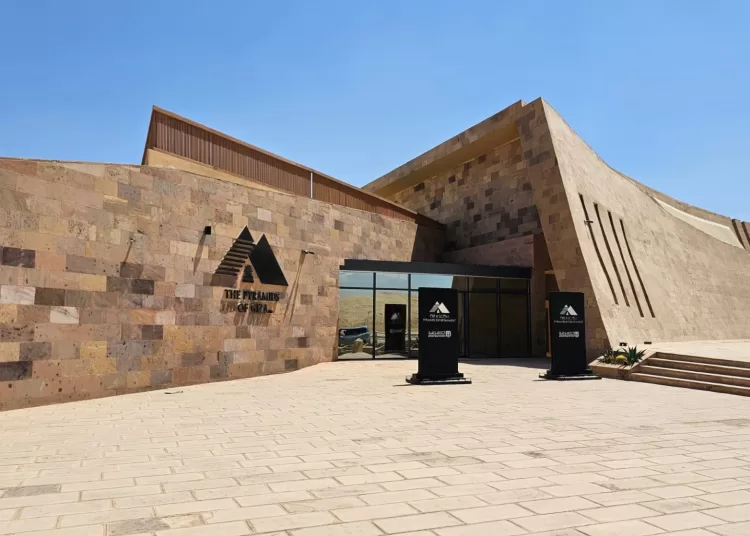The Giza Pyramids are undergoing a transformative upgrade aimed at enhancing the visitor experience and bolstering Egypt’s tourism sector.
Starting April 8, the trial operation of the newly developed Giza Pyramids area will begin.
The upgraded area will only be accessed through the Fayoum Desert Road entrance, according to Amr Gazarin, chairman of Orascom Pyramids Entertainment (OPE), the company carrying out the upgrade which is also responsible for the management of the area.
He noted that the site’s official inauguration would be made on July 3.
“This will coincide with the opening of the highly anticipated Grand Egyptian Museum,” Gazarin said in a statement on his Facebook page.
OPE implements this ambitious development project in collaboration with the Supreme Council of Antiquities under a 2018 cooperation protocol to provide and operate facilities at the Giza Plateau.
The goal is to transform the Giza Plateau into a world-class tourist destination, with investments exceeding EGP 1.5 billion (roughly $30 million).
Visitors will enter through a newly designed main gate that offers a more structured and immersive approach to the site.
Environmentally-friendly buses will transport guests, providing breath-taking initial glimpses of the pyramids as they emerge from the desert landscape.
A state-of-the-art parking lot was established to accommodate over 1,000 passenger cars and around 100 tourist buses, ensuring smooth arrivals.
The upgrades would significantly enhance visitor comfort and safety, Gazarin said in a previous interview with The Egyptian Gazette.
“There will be an end to all negative things on the site,” he said, referring to visitors’ objection to overcrowding, unregulated vendors, and inadequate facilities on the site in the past.
The emphasis on sustainability and convenience positions the Giza Pyramids site as a modernised attraction for both local and international tourists.
The journey begins at the Visitor Centre, which features multiple ticket windows, an accessible counter for individuals with disabilities, and the option to purchase tickets online or via credit cards.
Visitors can then board the eco-friendly hop-on, hop-off buses, which eliminate exhaust fumes and noise pollution, creating a more sustainable and serene environment.
Each bus is equipped with WiFi and audio guides to enhance the experience.
Key designated stops, including Panorama One, Menkaure, Khufu and Khafre, the Sphinx, and the Riding Zone, have been upgraded with modern amenities.
These include shaded seating areas, restrooms, first-aid centres, restaurants, shops, and bazaars. Special provisions ensure, meanwhile, accessibility for individuals with disabilities.
The makeover of the Giza Plateau, initially started in 2007, but it faced delays in 2011 due to political and economic challenges. However, it gained pace again in 2017.
It includes major infrastructure upgrades like better lighting, electronic security systems, and relocating the main entrance to Fayoum Road, away from the historic Marriott Mena House Hotel.





